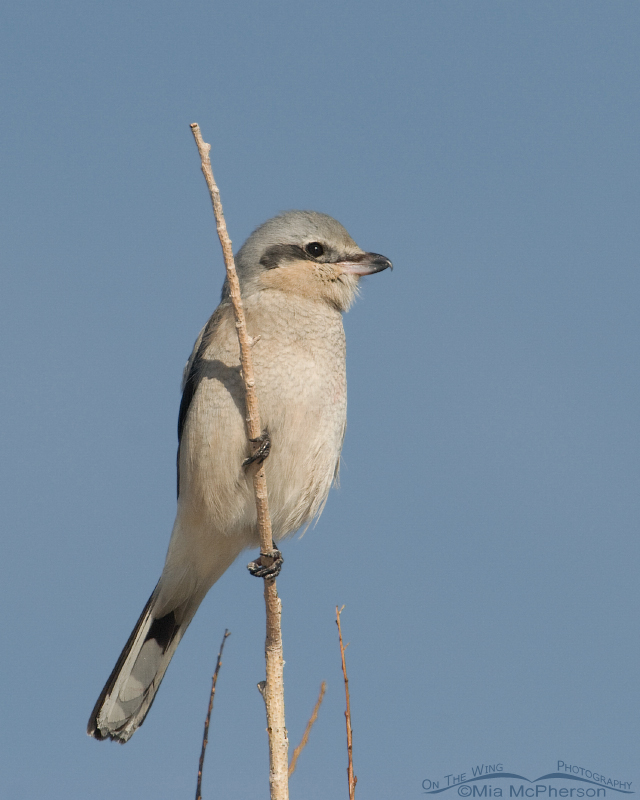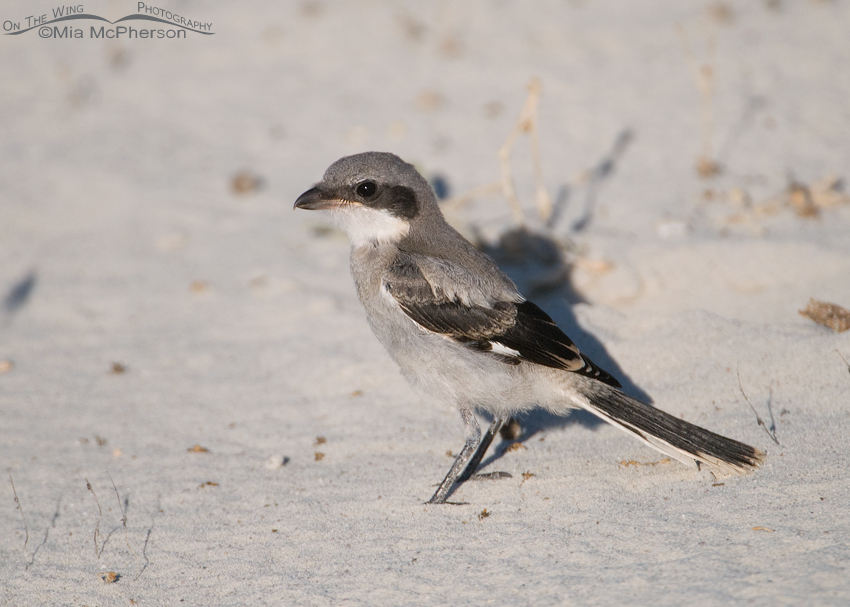 Immature Northern Shrike on a cold Utah Day – D200, f8, 1/1250, ISO 400, 200-400mm VR with 1.4x TC at 400mm, natural light
Immature Northern Shrike on a cold Utah Day – D200, f8, 1/1250, ISO 400, 200-400mm VR with 1.4x TC at 400mm, natural light
Today was a good day, I finally took some images of a Northern Shrike that weren’t taken from too far away. This Northern Shrike has been hanging out for a couple of weeks at one of my favorite locations close to home but it has never allowed this close of an approach.
There are two species of shrikes in North America, the northern shrikes are paler, have longer bills and are larger bodied than the Loggerhead Shrikes. The immature and 1st winter Northern Shrikes have “scaled” chests and brownish underparts, a white orbital ring and a narrow mask. I believe this is a 1st winter bird. The adults have gray-white underparts, a white throat and the barring is less noticeable.
I was thrilled to get this close to the shrike. I do not see this species in the warmer months of the year because it breeds in sub-Arctic forests across Alaska and Canada.
 Immature Loggerhead Shrike – D200, f5.6, 1/2000, ISO 500, 200-400mm VR with 1.4x TC at 400mm, natural light
Immature Loggerhead Shrike – D200, f5.6, 1/2000, ISO 500, 200-400mm VR with 1.4x TC at 400mm, natural light
This immature Loggerhead Shrike is smaller than the Northern Shrike, the bill is shorter, the mask is wider and it does not have the white orbital ring that immature Northern Shrikes do. They do have some fine barring on their chests but it is not as pronounced as the scaling is on immature Northern Shrikes.
This immature Loggerhead Shrike was on oolitic sand, found in areas like the Great Salt Lake near where this image was taken.
I’m fascinated by both species of shrikes who are also known as “Butcher Birds” because they often impale their prey on thorns or barbed wire. I’ve witnessed the impaling action of the loggerheads but have yet to see a Northern Shrike impale their prey.
Life is good.
Mia
Click here to see more of my Northern Shrike photos plus facts and information about this species. Click here to see more of my Loggerhead Shrike photos plus facts and information about this species.


That’s awesome Mia! I’ve been on the search for these two species to see if I could distinguish the two. Yesterday I finally saw both! The Loggerhead was a first for me. How exciting. These timid birds are difficult to shoot with my short lens. On Wednesday, a Northern Shrike was kind enough to allow me to approach close enough for a clear shot. It’s great to see you two out there looking for the same birds. Hopefully I will never disturb your shoots. Perhaps you could give me a high-five out the window as we pass each other at 5mph! hahaha… Enjoy your day. I admire both your photography and look forward to seeing more great shots.
-Shyloh
Hey, I recognize that bird! A real treat for us both to finally get close to it!